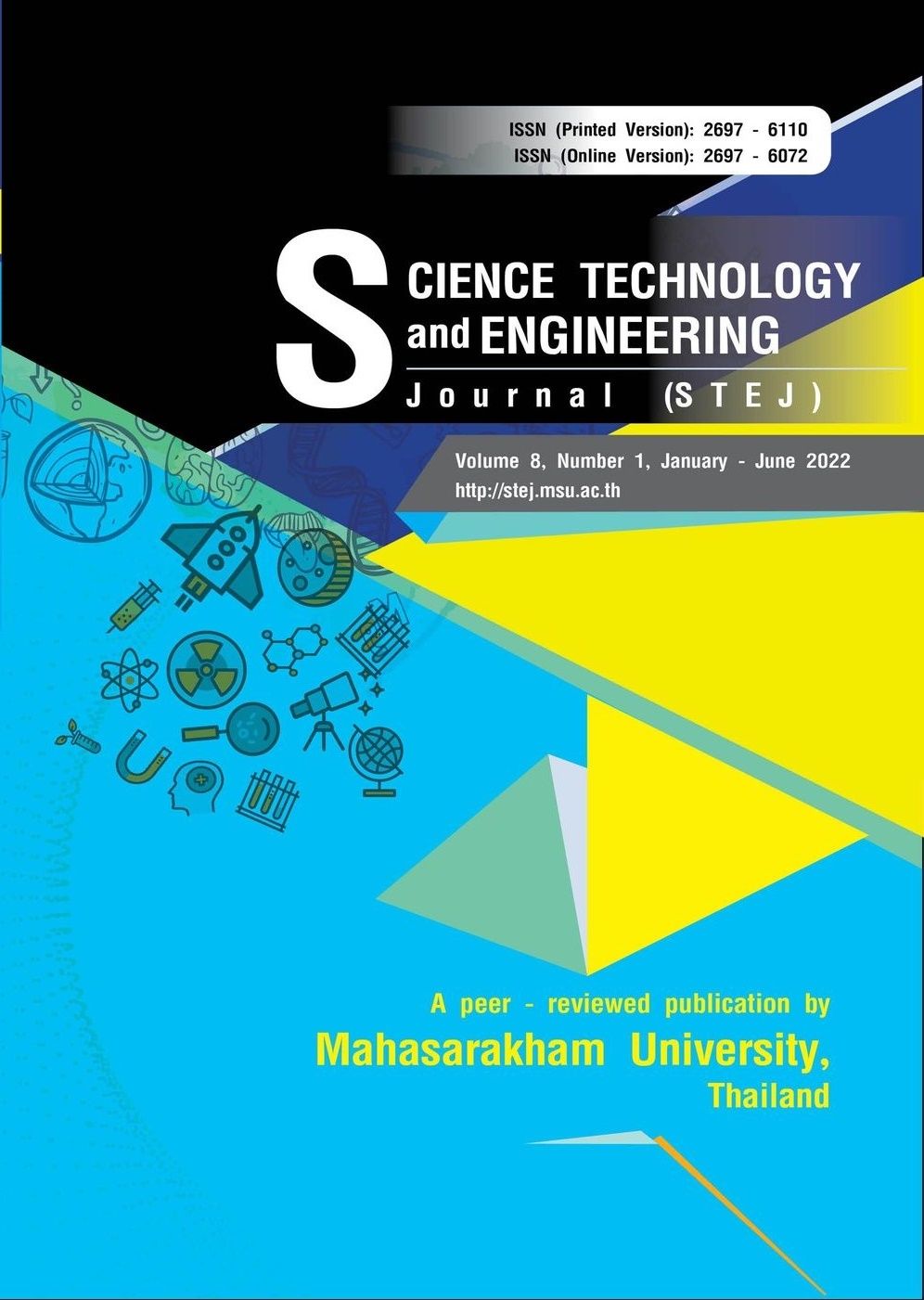Supplementation of combined tomato powder and bacterial cellulose in chicken Chinese sausage
Keywords:
Chinese sausage, meat product, natural antioxidant, BHT, peroxide valueAbstract
Meat products with low synthetic antioxidants are getting attention for consumers. We expected to extend the findings to produce the product with low synthetic antioxidants. The objective of this study was to compare the effect of natural compounds (combination of bacterial cellulose, BC and tomato powder, TP) and synthetic antioxidants (buthylated hydroxytoluene, BHT) on the physico-chemical properties and sensory attributes of chicken Chinese sausage (CCS). The determination of DPPH scavenging activity, peroxide value (PV), color, pH, texture properties and sensory characteristics were studied. We found that DPPH radical scavenging activity, a*, b*, hardness, gumminess and chewiness were increased with increased levels of TP. In contrast, CCSs with increased level of TP showed the reduction in PV and sensory attributes. This study revealed a potential application of BC and TP as ingredient to produce the meat product with low synthetic antioxidants. Overall, our results indicated that incorporation of BC2:TP2:BHT0.015 in CCS was the most effective DPPH scavenging activity and peroxide value.
References
Cho, S., & Almeida, N. (2012). Dietary fiber and health. CRC Press.
Choi, Y.-S., Choi, J.-H., Han, D.-J., Kim, H.-Y., Lee, M.-A., Kim, H.-W., Lee, J.-W., Chung, H.-J., & Kim, C.-J. (2010). Optimization of replacing pork back fat with grape seed oil and rice bran fiber for reduced-fat meat emulsion systems. Meat Science, 84(1), 212-218.
Esa, F., Tasirin, S. M., & Abd Rahman, N. (2014). Overview of bacterial cellulose production and application. Agriculture and Agricultural Science Procedia, 2, 113-119.
Eyiler, E., & Oztan, A. (2011). Production of frankfurters with tomato powder as a natural additive. LWT - Food Science and Technology, 44(1), 307-311.
Fish, W., Perkins-VeazieJulie, P. & Collins, K. (2002). A Quantitative Assay for Lycopene That Utilizes Reduced Volumes of Organic Solvents. Journal of Food Composition and Analysis, 15(3), 309-317
Gann, P. H., Ma, J., Giovannucci, E., Willett, W., Sacks, F. M., Hennekens, C. H., & Stampfer, M. J. (1999). Lower prostate cancer risk in men with elevated plasma lycopene levels: results of a prospective analysis. Cancer research, 59(6), 1225-1230.
Jagannath, A., Kalaiselvan, A., Manjunatha, S., Raju, P., & Bawa, A. (2008). The effect of pH, sucrose and ammonium sulphate concentrations on the production of bacterial cellulose (Nata-de-coco) by Acetobacter xylinum. World Journal of Microbiology and Biotechnology, 24(11), 2593-2599.
Lin, D., Lopez-Sanchez, P., Li, R., & Li, Z. (2014). Production of bacterial cellulose by Gluconacetobacter hansenii CGMCC 3917 using only waste beer yeast as nutrient source. Bioresource Technology, 151, 113-119.
Lorenzo, J. M., González-Rodríguez, R. M., Sánchez, M., Amado, I. R., & Franco, D. (2013). Effects of natural (grape seed and chestnut extract) and synthetic antioxidants (buthylatedhydroxytoluene, BHT) on the physical, chemical, microbiological and sensory characteristics of dry cured sausage “chorizo”. Food Research International, 54(1), 611-620.
Lu, X., Qian, Y., & Yan, T. (2004). Bacterial cellulose production by soybean whey based medium. Current Applied Science and Technology, 4(1), 100-107.
Mercadante, A. Z., Capitani, C. D., Decker, E., & Castro, I. A. (2010). Effect of natural pigments on the oxidative stability of sausages stored under refrigeration. Meat Science, 84(4), 718-726.
Mesomya, W., Komindr, S., Leelahakul, P., Cuptapun, Y., Hengsawadi, D., Tammarate, P., & Tangkanakul, P. (2008). Effects of health food from cereal and nata de coco on serum lipids in human. Institute of Food Research and Product Development, Kasetsart University.
Mirondo, R., & Barringer, S. (2015). Improvement of flavor and viscosity in hot and cold break tomato juice and sauce by peel removal. Journal of Food Science, 80(1), S171-S179.
Nochai, K., & Pongjanta, J. (2013). Effects of tomato variety and lycopene extraction methods on physicochemical properties of tomato powder. KMUTT Research and Development Journal, 36(4), 409-421.
Østerlie, M., & Lerfall, J. (2005). Lycopene from tomato products added minced meat: Effect on storage quality and colour. Food Research International, 38(8-9), 925-929.
Rahman, M.S. & Labuza, T. P. (2007). Water activity and food preservation. In Rahman, M.S. (Ed.), Handbook of food preservation (pp. 447-476).
Savadkoohi, S., Hoogenkamp, H., Shamsi, K., & Farahnaky, A. (2014). Color, sensory and textural attributes of beef frankfurter, beef ham and meat-free sausage containing tomato pomace. Meat Science, 97(4), 410-418.
Sebranek, J., Sewalt, V., Robbins, K., & Houser, T. (2005). Comparison of a natural rosemary extract and BHA/BHT for relative antioxidant effectiveness in pork sausage. Meat Science, 69(2), 289-296.
Shi, Z., Zhang, Y., Phillips, G. O., & Yang, G. (2014). Utilization of bacterial cellulose in food. Food hydrocolloids, 35, 539-545.
Tan, S., Ke, Z., Chai, D., Miao, Y., Luo, K., & Li, W. (2021). Lycopene, polyphenols and antioxidant activities of three characteristic tomato cultivars subjected to two drying methods. Food Chemistry, 338, 128062.
Thai community product standard. (2021). Dried chicken sausages, Kunchiana kai (reference number 105/2555). https://tcps.tisi.go.th
Toor, R. K., & Savage, G. P. (2006). Effect of semi-drying on the antioxidant components of tomatoes. Food Chemistry, 94(1), 90-97.
Tseng, A., & Zhao, Y. (2013). Wine grape pomace as antioxidant dietary fibre for enhancing nutritional value and improving storability of yogurt and salad dressing. Food Chemistry, 138(1), 356-365.
Valenzuela-Melendres, M., Torrentera-Olivera, N.G., González-Aguilar, G., Villegas-Ochoa, M., CumplidoBarbeitia, L. G., & Camou, J. P. (2014). Use of avocado and tomato paste as ingredients to improve nutritional quality of pork frankfurter. J Food Res, 3, 132-143.
Wang, X., Zhou, P., Cheng, J., Yang, H., Zou, J., & Liu, X. (2022). The role of endogenous enzyme from straw mushroom (Volvariella volvacea) in improving taste and volatile flavor characteristics of Cantonese sausage. LWT, 154, 112627.
Yu, H., Qin, C., Zhang, P., Ge, Q., Wu, M., Wu, J., Wang, M., & Wang, Z. (2015). Antioxidant effect of apple phenolic on lipid peroxidation in Chinese-style sausage. Journal of food science and technology, 52(2), 1032-1039.
Downloads
Published
Issue
Section
License
Copyright (c) 2022 Science Technology and Engineering Journal (STEJ)

This work is licensed under a Creative Commons Attribution-NoDerivatives 4.0 International License.





